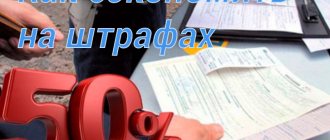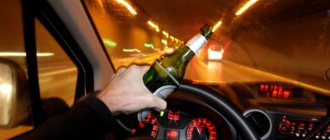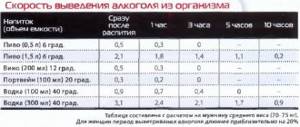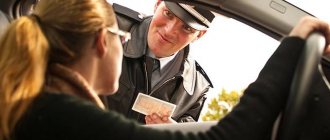- Acceptable intoxication
- Fine and liability
- Repeated violation
- Drunk driving other types of vehicles
- Consequences of refusing honey. examinations
- Punishment if there are victims
As a participant in traffic, you must strictly observe the current rules, which determine, in particular, the ability to drive a car. One of the points of the traffic rules is the requirement not to drive and not to hand over the car to persons in a state of intoxication. The consequences of ignoring it can be varied, but in any case, the perpetrators are held accountable. What can be the fine for drunk driving and are there other types and types of penalties? The degree of punishment will be determined depending on the type and consequences of the violation and will refer to the Code of Administrative Offenses or the Criminal Code of the Russian Federation.
What is re-deprivation of rights?
Today, penalties for traffic offenses committed by drivers have become more serious and much tougher. A driver who repeatedly violates the rules established by traffic rules and has already been prosecuted will face a more severe penalty.
The seizure of a document giving the right to operate a car will be considered repeated if it was committed earlier than a one-year period has passed since the previous unlawful act related to violation of traffic rules.
Permissible blood alcohol level in 2019-2020
Drivers are required to know what the approved permissible level of alcohol in the blood is in 2019-2020, how many ppm are “legal” when measured by a breathalyzer, and what affects this value, except for drinking alcohol.
The minimum dose of alcohol, in the opinion of the motorist, will not exempt you from liability if traffic police officers stop you and demand that you take a test.
The deviation of the indicator from the norm is affected by some common foods and medications, which drivers should remember and refrain from consuming before getting behind the wheel, so as not to become an involuntary offender.
Permissible amount of alcohol
There is no such thing as the permissible level of alcohol consumed in the blood in 2019-2020. The fact is that each organism requires a different dose of alcohol to feel intoxicated. For some, 50 g is enough to feel dizzy, but for others, a whole bottle is not enough.
But you should not rely on external and imaginary internal manifestations of intoxication. The slowing down of central nervous system reactions begins with the first glass of alcoholic drink. A minimum dose of 2-3 sips of beer affects the body, and it is not necessarily accompanied by obvious signs.
The person speaks coherently, does not feel dizzy, but the process in the body has started.
It is a mistake to rely on tables found on the Internet with permissible volumes of alcoholic beverages. Such sources claim that a breathalyzer will not show a deviation from the norm if a person drinks 50 g of vodka.
The data posted online even shows the rate at which alcohol is dissipated. If you believe these indicators, a glass of vodka will disappear in 3-5 hours. But it should be taken into account that each body both absorbs and eliminates alcohol in its own way.
Overweight people sober up faster than thin people, but body weight is not the only indicator; it is influenced by lifestyle, metabolic rate, and the state of the gastrointestinal tract.
For what violations are rights deprived?
The punishment for which the car owner will be given a court decision - confiscation of the driver's license, will be imposed for the following violations:
- driving while intoxicated;
- allowing a person who is intoxicated to drive a car;
- driving a vehicle into a lane intended for oncoming traffic;
- fleeing the scene of an accident;
- hitting a double solid road, as well as its intersection;
- driving in the opposite direction on the road surface required for one-way traffic;
- overtaking on a section of the road where a corresponding prohibition sign is installed;
- driving under the prohibitory sign “No Entry”;
- operation of a vehicle by a person who does not have a driver’s license;
- non-compliance with traffic rules, due to which the fact of causing harm to the victim’s health was committed;
- debt to pay fines.
Also, if you repeatedly fail to comply with certain traffic rules, the driver may be deprived of his driving license. For example, for operating an unregistered vehicle, the car owner for a similar violation will face withdrawal of rights for a period of up to three months and a monetary penalty. The amount of penalties is 5 thousand rubles.
Repeated deprivation of license for driving while intoxicated
If the car owner was previously subject to a penalty for driving while intoxicated in the form of withdrawal of his license, then in case of a similar violation he will incur criminal or administrative liability. This will be influenced by the time period that has passed since the date of return of rights.
If during the first calendar year after the restoration of a revoked driver’s license, the offender repeatedly drives a car while drunk, he will incur criminal liability.
However, in the event of an offense committed while intoxicated after the expiration of a one-year period after the return of the license, the car owner will be given an administrative penalty, as for failure to comply with traffic rules for the first time - a penalty in the amount of thirty thousand rubles and confiscation of the driving license for a period of two years.
Amounts of fines
| Type of violation | Punishment for the first instance of non-compliance with the rules | For repeated violation |
| Using a vehicle for its intended purpose while intoxicated | Fine 30 thousand rubles. and confiscation of driving license for a period of 36-48 months. | Fine from two hundred to three hundred thousand rubles. or compulsory work for a period of up to 20 days or forced labor for a period of up to 24 months or imprisonment for up to 24 months, and mandatory confiscation of driving license for 36 months is also applied to criminal punishment. |
| Driving into oncoming traffic separated by a solid lane | Fine 5 thousand rubles. or confiscation of driving license for up to six months | Deprivation of the right to drive a vehicle for a year, and if the violation is photographed or video recorded, a fine of 5 thousand rubles will be imposed. |
| Leaving the scene of an accident by a violator | Deprivation of rights for a period of one year to 36 months or up to 15 days of arrest | Collection in the amount of up to 300 thousand rubles. or compulsory work for a period of up to 480 hours or forced labor for a period of up to 24 months or arrest for up to two years, and confiscation of driving license for three years is also applied to criminal punishment |
| The intersection of two solid | Fine up to 5 thousand rubles. or confiscation of driving license for up to six months | Confiscation of driving license for a period of twelve months or a fine of 5 thousand rubles, if the violation was recorded using photo or video recording |
| Overtaking on a section of the road where a corresponding prohibition sign is installed | Fine 5 thousand rubles. or confiscation of driving license for up to six months | Confiscation of driving license for one year or a fine of 5 thousand rubles, if the violation was recorded using photo or video recording |
| Driving oncoming traffic on a one-way road | Fine 5 thousand rubles. or confiscation of driving license for up to six months | Confiscation of driving license for one year or a fine of 5 thousand rubles, if the violation was recorded using photographic material or video recording |
Criminal liability
When operating a vehicle while intoxicated, the owner of the car will be held criminally liable if it is established that the rules are not followed again.
Thus, he will face fines of up to three hundred thousand rubles, deprivation of the right to drive a car for three years, as well as imprisonment for up to 24 months.
However, criminal law provides for more severe penalties when committing an accident in which there are victims:
- If the victim causes serious harm to health, the culprit, that is, the owner of the car, will be fined in the form of confiscation of the license for 36 months, as well as restriction of freedom for a period of four years or three years of forced labor.
- If the accident caused the death of one or more injured people, then the motorist can be imprisoned for a period of up to nine years or five years of forced labor, and, of course, confiscation of driving license for three years.
How many ppm are allowed under the new law in 2021
Many experts mistakenly believe that Russia leads in the number of alcoholic beverages. This is not true in per capita terms, although the number of people who drink still makes one wonder. Particularly frightening is the fact that people are increasingly drinking and driving.
The state is taking increasingly harsh measures against violators, while justice has been restored and the permissible limit for alcohol while driving has been changed. How many ppm are allowed by law in 2020 is a question that we will try to answer.
How the amount of permissible ppm changed
Between 2010 and 2013. in the Russian Federation there was a “zero” permissible ppm standard. This means that not only the consumption of alcoholic beverages while driving was prohibited, but also some products containing even a small amount of alcohol.
Free consultation with a lawyer on car law>>
The list of such products includes:
- some lactic acid products (kefir, yogurt, aeran, yogurt and others).
- soft drinks, including kvass and “zero” beer.
- warm juices in which the fermentation process has already begun.
- oranges and overripe bananas.
- chocolate and confectionery, in the preparation of which cognac, rum and other alcoholic drinks are used.
- Rye bread.
- cigarettes.
- some alcohol-containing medications.
This list can be continued with other products, but even without this it becomes clear that even if you made a sandwich of black bread with sausage for breakfast, and washed it down with warm orange juice, the breathalyzer can play a cruel joke on you. Understanding this, and succumbing to the demands of a dissatisfied public, legislators adopted a federal law on ppm - Federal Law No. 196 of July 23, 2013.
Corresponding changes were also made to the Code of the Russian Federation on Administrative Offences.
According to the new rules, liability may arise if the driver has 0.35 ppm in his blood (or 0.16 ppm on exhalation).
These same numbers remain relevant in 2021. What do these same ppm mean, and how much of it is contained in different alcoholic beverages? More on this later in the text.
How many ppm are in alcoholic beverages?
Promille is a value that determines the degree of intoxication of a person, and this value is calculated by the concentration of alcohol in the blood. You can check this in two ways: by taking a blood test or using a special device - a breathalyzer.
A tenth of a ppm is only 0.045 mg of alcohol per 1 liter of alcohol. It is also important to understand that to accurately determine the amount of ppm in the blood at the time of testing. It is necessary to take into account the last time alcohol was consumed.
So that you understand what we are talking about, we have collected information about how many ppm are in the most popular drinks after a certain time in a table:
| Time after administration, hours | Bottle of vodka 0.5 l, pro mille | Bottle of vodka 0.3 l, pro mille | 6 bottles of beer, pro mille | 2 bottles of wine, pro mille |
| 12 | 0,68 | 0,39 | 0,48 | 0,51 |
| 13 | 0,61 | 0,27 | 0,44 | 0,41 |
| 15 | 0,48 | 0.14 | 0,23 | |
| 17 | 0,21 | 0,11 | ||
| 18,3 |
If we draw brief conclusions, then, without fear of penalties, you can get behind the wheel if 17 hours have passed after drinking 0.5 liters of vodka; for safe movement, 13 hours must pass after drinking 0.4 liters of vodka. If you drank 6 bottles of beer the day before, it is better to refrain from traveling until 15 hours have passed, as is the case if you drank 2 bottles of wine in the evening.
Is it possible to be deprived of rights for life?
To date, the legislation does not provide for such punishment as permanent deprivation of rights. However, the State Duma is considering a proposal in which this preventive measure will be applied to drivers for repeated operation of a vehicle by a person who was previously deprived of a driving license or while intoxicated.
This type of punishment, according to officials, will have to make car owners more accountable to traffic rules.
Every year, the preventive measure for repeated offenses becomes tougher. In addition to financial losses, the driver, through his own negligence, can cause harm to the health of other road users. However, in addition to this, he will be deprived of his driver's license and possibly even his freedom.
Compliance with traffic rules will be the only solution that will prevent you from becoming a danger to other drivers and pedestrians, and will also significantly reduce the number of problems with the law.
Didn't find the answer to your question? Find out how to solve exactly your problem - call right now: +7 (Moscow) +7 (812) 309-53-42 (St. Petersburg) It's fast and free!
Free online consultation with a car lawyer
Didn't find the answer to your question? Find out how to solve exactly your problem - call right now: +7 (Moscow) +7 (812) 309-53-42 (St. Petersburg) It's fast and free!
Acceptable intoxication
Every motorist knows that driving while intoxicated is strictly prohibited by traffic rules. At the same time, the question often arises about how one can ascertain such a state, what should one rely on? First of all, it is determined on the basis of characteristic features, such as:
- the smell of alcohol;
- motorist speech impairment;
- impaired coordination;
- non-standard behavior (uncharacteristic of sober people).
Such signs are only indirect, because traffic police officers are able to determine sobriety by analyzing the amount of alcohol in a certain volume of air or blood exhaled by a motorist.
In accordance with the latest amendments made to the Code of Administrative Offenses of the Russian Federation (Article 12.8) in April 2021 (No. 62-FZ), this norm is adopted as 0.16 mg/l when determining the state of intoxication using a breathalyzer and 0.3 g/l when laboratory blood sampling. Indicators above are considered a violation.










